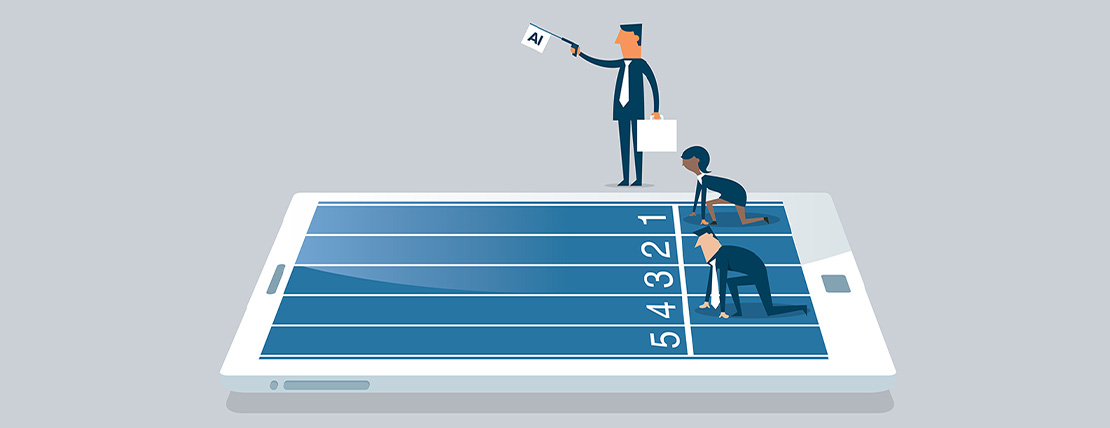The rapid growth and acceptance of ChatGPT has sparked the launch of new, large language tools and driven the desire to incorporate the technology into all aspects of business, including HR. As a result, HR professionals are either being pushed by their leaders or motivated on their own to explore new ways to use AI.
To help HR professionals get started leveraging AI tools, we spoke with several experts representing different segments of the HR industry — compensation, recruiting, recognition and the executive level. Here are their tips for helping you get in and get started using AI.
1. Get Your Feet Wet
As with any new technology, using it is often the best way to learn it. Unfortunately, people tend to hesitate when the technology is intimidating, or if they worry, they won’t be successful.
“It’s a lot like driving a car while it’s being built,” said Kelly Yeates, vice president of service operations at Insperity, an HR solutions provider. “The car may not have all the pieces around it, but if you quit driving it, you’ll completely miss your destination.”
“You really have to dig in and engage with it, yet there are people out there sticking their heads in the sand and waiting for others to explain it to them,” said Paul Reiman, founder and managing partner of Novo Insights, LLC, a data-driven HR consulting firm.
Reiman said he learned a lot by using ChatGPT and trying to trick it. His approach: “Can I make it give me a bad answer? How can I make it give me a better answer? Then I think critically about what I changed in the prompt to make the answer better,” he said. “You have to experience it to really understand how it can be used.”
Webinar: Unlocking the Potential of Generative AI for Total Rewards
Organizations that already use AI tools incorporating predictive analysis or machine learning say that users must know the best ways to engage with any form of artificial intelligence is to understand how the tools generate their results. It goes beyond demonstrations — it means practice.
“The tools we’re talking about have to be used by the right hands,” said Shannon Pritchett, head of marketing and community with hireEZ, a digital corporate recruiting tool. “You need to be able to ask good questions. I think you need to understand how it’s working and have more of a detective mindset…You need to know what questions to ask.”
Pritchett said it’s vital to know what the technology is, how it’s generating results, what is acceptable, and what isn’t. “To me,” she said, “it’s hard to put all your trust into any tool without a better understanding of how it’s producing results. With our client usage, we try to be as transparent as possible to create awareness, but I hope that recruiters are putting more emphasis into understanding the technology better. You don’t need to be a scientist or data analyst, but you have to understand how it’s working for you.”
2. Learn How to Adapt AI Results
While AI can help HR professionals get a leg up on their work, it’s not always reliable for producing a final product. That means HR professionals must be ready and able to take the first drafts produced by AI tools and know how to turn them into finished solutions.
One example is using AI tools to create total rewards communication, such as Amplify, which uses AI to help customers write appreciation messages to peers and employees. The tool is produced by software company Abundantly.
“Our vision for artificial intelligence is getting the right message to the right person in the right manner,” said Randall Diamond, founder of Abundantly.
“When we rolled this out, the concern was that it diminishes the authenticity, especially if the recipient finds out,” Diamond said. He believes that trying to hide AI’s involvement is “foolish because people will find out quickly and that’s the wrong way to manage change,” he said. “But I also think it’s important to highlight the real point of any tool…You have to identify clearly where artificial intelligence is being leveraged and then take advantage of that because you can either surf with a wave or swim against the current.”
According to Diamond, when Amplify is used, his organization sees a 50% increase in recognition messages being sent, which can help move backlogged messages into people’s hands, thereby boosting recognition efforts.
On the other hand, while large language model-based AI can be a great time saver, it is not the ideal method of communication, according to Reiman. It can’t differentiate its messaging for different workforce segments, he said, and it doesn’t have the context to communicate with various groups. (To see the four groups Reiman says HR professionals communicate with, see the sidebar below.)
AI can calculate, observe behavior, and make recommendations, but the soft skill of engaging with an audience has yet to develop, he added.
How Comp Professionals Communicate
Compensation professionals really serve four audiences, and each requires a different type of communication, according to Paul Reiman, founder and managing partner of Novo Insights.
- There’s community. These can range anywhere from 10,000 people down to a handful. “You have to think about how they will consume your message and who are the types of people who will be consuming it.” Communicating with this group prevents the opportunity for them to ask clarifying questions in many cases.
- Managers are the next group. “We’re usually training managers so it’s more of an enabling and coaching style.”
- Executives are the third group. “With executives you are trying to convince them of something. You have a position, and you are advocating for a particular outcome.”
- The last are HR partners. “They are part of your own ecosystem. Essentially, it’s about rallying the troops.”
Adapting outputs from AI, such as drafts of communication, requires HR professionals to have relationships in place so they understand the needs and expectations of the audiences they communicate with, according to Yeates. As a result, Yeates expects relationships will be even more important for HR as the profession takes on AI tools. HR professionals, she said, “need a clear line of sight into the other departments, what they need, and how it’s changing their workforce needs and workforce planning. Those close relationships will be really important.”
3. Understand That AI Usage Is an Evolving Situation
Trying out AI is a necessarily ambiguous exercise, one without a clear end point for many HR professionals and organizations. This ambiguity can create some uncomfortable situations, particularly for professionals who are used to working within a clear set of parameters.
Ultimately, HR professionals must recognize that working with AI is an evolving skill, and they must be prepared to evolve with it.
“I believe a key challenge for the HR profession is developing a comfort level with making decisions in states of high ambiguity,” Yeates said. “As HR professionals, we tend to like having some levels of certainty when it comes to compliance, when it comes to risk mitigation, when it comes to policies and procedures, and when it comes to the pace of change. But if we wait to have 100% surety, then we will be so far behind that the decision won’t even matter anymore.”
For example, working with AI may require changing the way professionals engage with vendors or allot their budgets for resources. Businesses and HR professionals will need the ability to strike a balance with adopting and integrating new technology without getting locked into something that will hobble them in the future. Since there are no soothsayers in the HR industry, the ability to adapt is crucial.
“We used to try to see if we could get longer-term contracts so we could get some price concessions,” Yeates said. “In this environment, I don’t know that a long-term contract is really in your best interest.”
Experience managing ambiguity may be helpful in dealing with AI. For example, HR professionals who successfully navigated the pandemic can rely on that experience — dealing with unknown factors and forces — and may have a leg up on those who didn’t. During COVID, practitioners were trying to make forecasts and decisions about workforce needs, health and safety, and myriad other concerns without a clear picture of what the next three months to two years would look like.
Unlike the pandemic, HR professionals know the next wave of AI is coming. The time to start preparing is now.
Editor’s Note: Additional Content
For more information and resources related to this article see the pages below, which offer quick access to all WorldatWork content on these topics:







